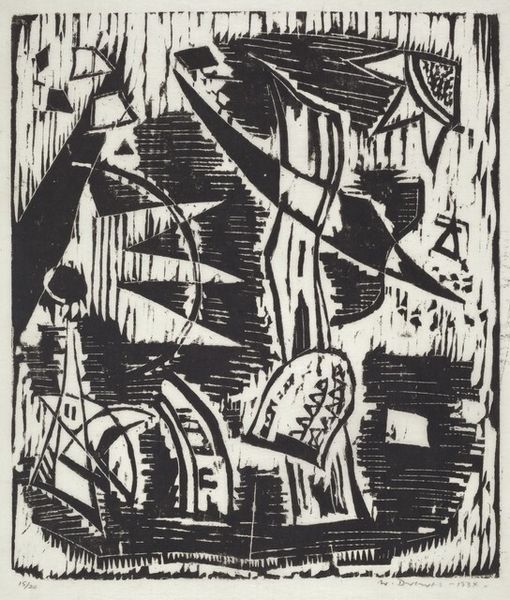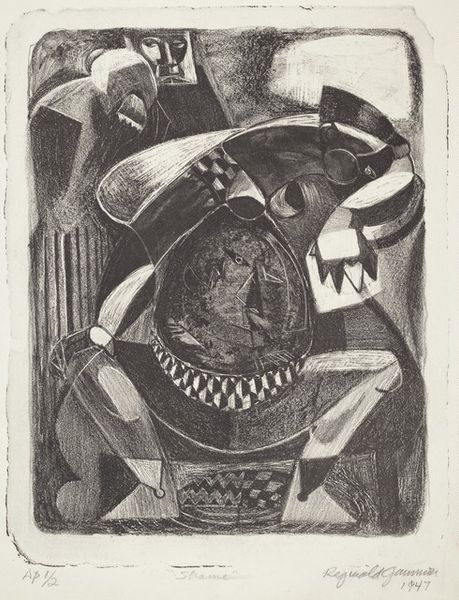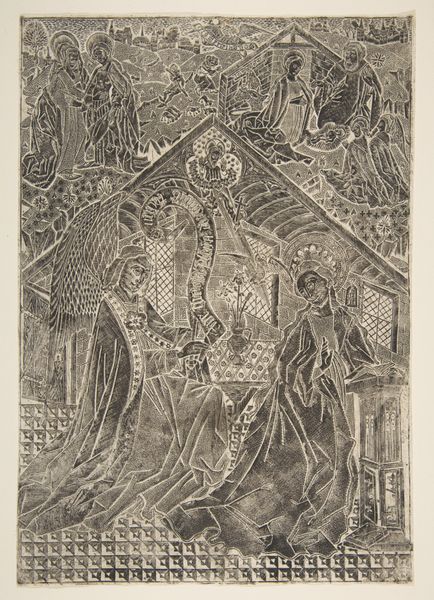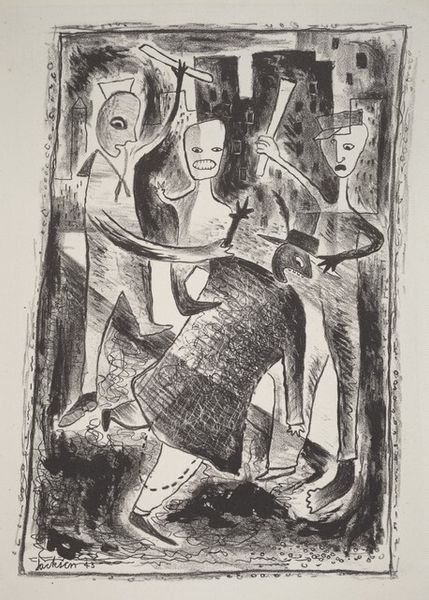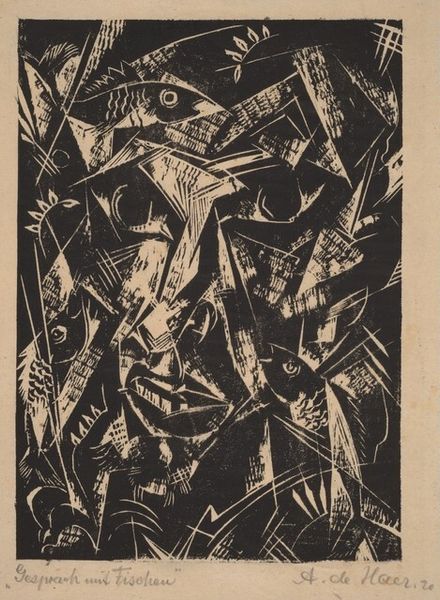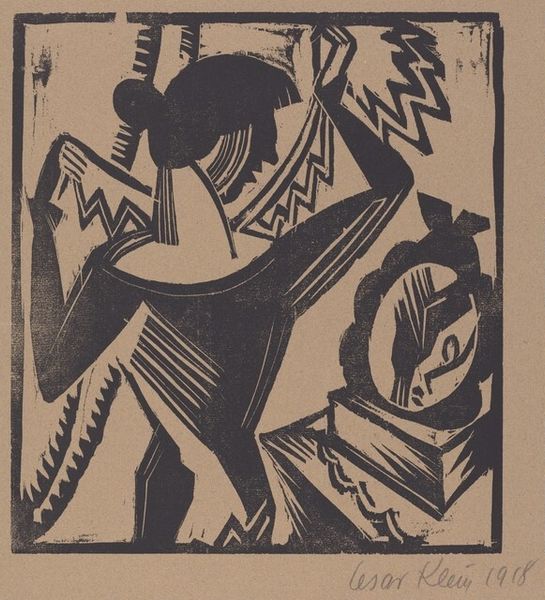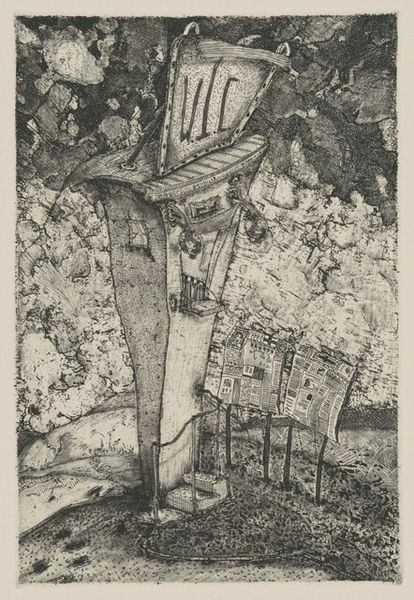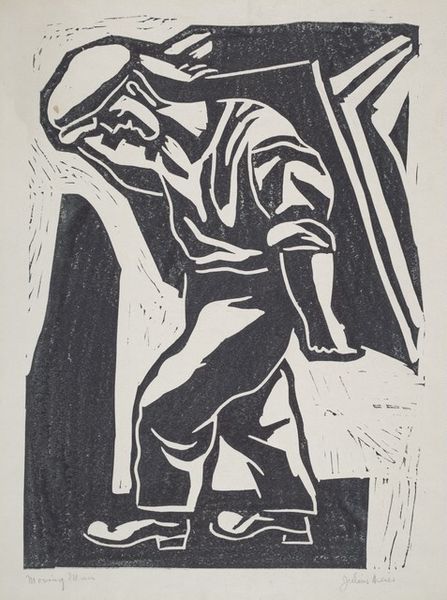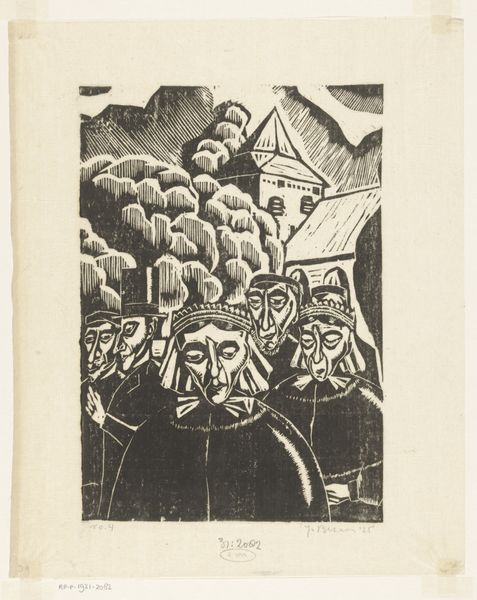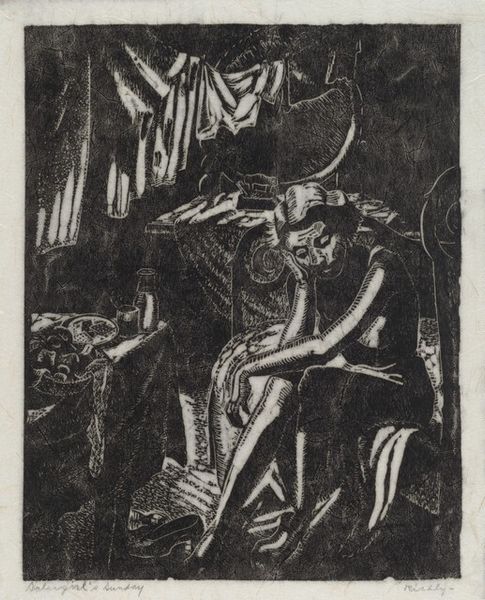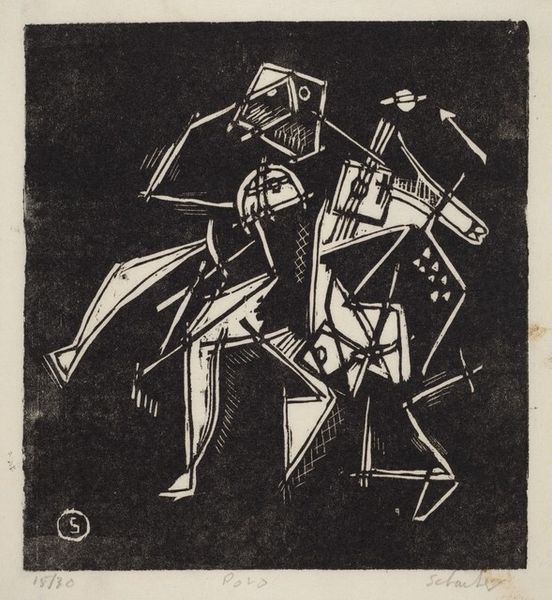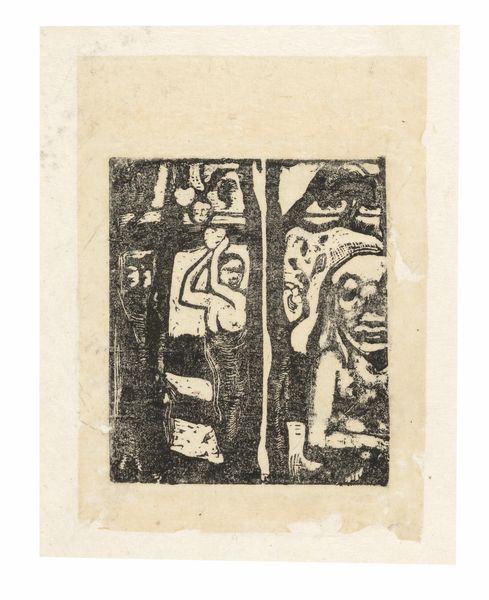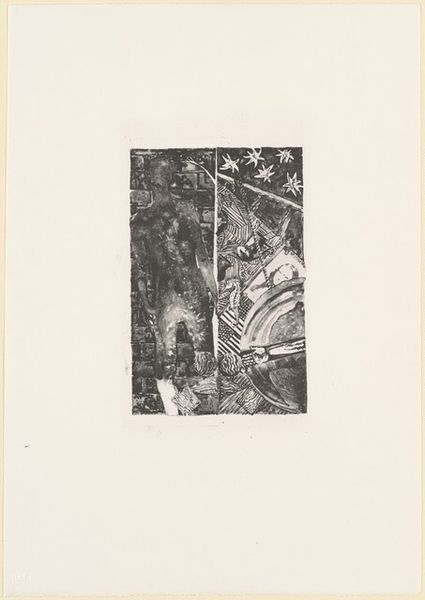
graphic-art, print, linocut
#
graphic-art
#
linocut
# print
#
linocut
#
soviet-nonconformist-art
#
figuration
#
linocut print
Copyright: Georgyi Yakutovytch,Fair Use
Curator: Illustration To “Zahar Berkut” by Georgyi Yakutovytch from 1972 rendered in linocut. Editor: Immediately I’m struck by its powerful sense of impending doom! The figures seem trapped in a web of abstract shapes, heightening the tension. Curator: Exactly! Yakutovytch masterfully uses the stark contrasts of the linocut to depict this dramatic scene from Ivan Franko's historical novel. It’s Ukrainian folklore rendered with Soviet nonconformist art aesthetics. The narrative touches on familial responsibility, community, and defense of home in the face of impending invasion. It feels potent given the history between Ukraine and Russia. Editor: The novel focuses on internal betrayal and conflict, which makes the figures’ stoic, almost haunted expressions all the more intriguing. The faceless screaming figure at the top feels particularly striking. Is she meant to represent a collective grieving? Curator: It certainly hints at that! She stands behind two figures brandishing arms who look grounded, battle-ready but somber and, yes, definitely haunted. Yakutovytch brilliantly captures a profound moment, the instant just before conflict explodes, with great focus on emotion rather than the depiction of what leads to action. This echoes Franko's own interest in individual experience shaped by history. Editor: And even the tools – spear, sword, bow – seem heavy with history and responsibility. One might wonder, whose story is not being told in that moment of representation? We can't see any opposing forces so we can focus more deeply on our figures. Curator: Indeed! You can almost hear the silence that precedes battle. Yakutovytch has used what some might perceive as limited Soviet means of linocut art to reveal layers and create a vivid impression of figures pushed into defending what’s theirs. He uses minimalism to create drama, an interesting approach when working in what can become graphic detail. Editor: And what's remarkable is how he achieves so much with the limited palette. Each cut, each line, serves to amplify the story's core themes of resilience and resistance, which of course feel extremely poignant today. Curator: It reminds us how art can transcend the limits of its creation, doesn't it? “Zahar Berkut” speaks with surprising urgency decades after its creation. Editor: Leaving me deeply pensive about echoes of historical pain. It's both specific and universal in its potent human message of conflict.
Comments
No comments
Be the first to comment and join the conversation on the ultimate creative platform.
